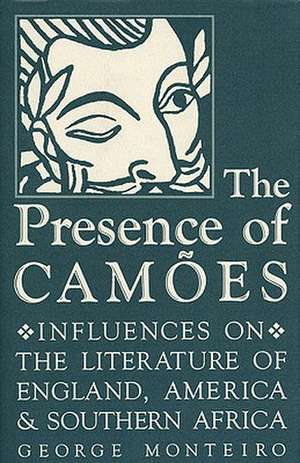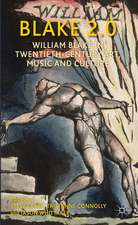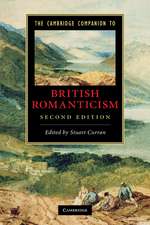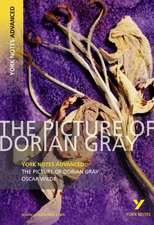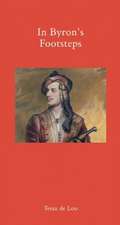The Presence of CAM?Es: Studies in Romance Languages, cartea 40
Autor George Manteiro, George Monteiroen Limba Engleză Hardback – 17 apr 1996
Din seria Studies in Romance Languages
-
 Preț: 194.30 lei
Preț: 194.30 lei -
 Preț: 393.29 lei
Preț: 393.29 lei -
 Preț: 190.82 lei
Preț: 190.82 lei -
 Preț: 188.32 lei
Preț: 188.32 lei -
 Preț: 147.33 lei
Preț: 147.33 lei -
 Preț: 184.50 lei
Preț: 184.50 lei -
 Preț: 112.28 lei
Preț: 112.28 lei -
 Preț: 187.93 lei
Preț: 187.93 lei -
 Preț: 111.67 lei
Preț: 111.67 lei -
 Preț: 147.70 lei
Preț: 147.70 lei -
 Preț: 150.38 lei
Preț: 150.38 lei -
 Preț: 191.80 lei
Preț: 191.80 lei -
 Preț: 151.57 lei
Preț: 151.57 lei -
 Preț: 230.87 lei
Preț: 230.87 lei -
 Preț: 226.24 lei
Preț: 226.24 lei -
 Preț: 150.59 lei
Preț: 150.59 lei -
 Preț: 114.39 lei
Preț: 114.39 lei -
 Preț: 114.78 lei
Preț: 114.78 lei -
 Preț: 191.80 lei
Preț: 191.80 lei -
 Preț: 227.82 lei
Preț: 227.82 lei -
 Preț: 345.40 lei
Preț: 345.40 lei -
 Preț: 111.30 lei
Preț: 111.30 lei -
 Preț: 187.17 lei
Preț: 187.17 lei -
 Preț: 192.39 lei
Preț: 192.39 lei -
 Preț: 149.82 lei
Preț: 149.82 lei -
 Preț: 226.85 lei
Preț: 226.85 lei -
 Preț: 113.80 lei
Preț: 113.80 lei -
 Preț: 231.64 lei
Preț: 231.64 lei -
 Preț: 113.03 lei
Preț: 113.03 lei -
 Preț: 117.06 lei
Preț: 117.06 lei -
 Preț: 224.33 lei
Preț: 224.33 lei -
 Preț: 150.59 lei
Preț: 150.59 lei -
 Preț: 398.84 lei
Preț: 398.84 lei -
 Preț: 120.33 lei
Preț: 120.33 lei -
 Preț: 319.12 lei
Preț: 319.12 lei -
 Preț: 122.90 lei
Preț: 122.90 lei -
 Preț: 123.82 lei
Preț: 123.82 lei -
 Preț: 229.35 lei
Preț: 229.35 lei -
 Preț: 227.62 lei
Preț: 227.62 lei -
 Preț: 207.36 lei
Preț: 207.36 lei -
 Preț: 231.46 lei
Preț: 231.46 lei -
 Preț: 309.32 lei
Preț: 309.32 lei -
 Preț: 200.51 lei
Preț: 200.51 lei
Preț: 228.59 lei
Nou
Puncte Express: 343
Preț estimativ în valută:
43.74€ • 45.78$ • 36.41£
43.74€ • 45.78$ • 36.41£
Carte tipărită la comandă
Livrare economică 31 martie-14 aprilie
Preluare comenzi: 021 569.72.76
Specificații
ISBN-13: 9780813119526
ISBN-10: 0813119529
Pagini: 200
Dimensiuni: 145 x 223 x 20 mm
Greutate: 0.43 kg
Ediția:New.
Editura: University Press of Kentucky
Seria Studies in Romance Languages
ISBN-10: 0813119529
Pagini: 200
Dimensiuni: 145 x 223 x 20 mm
Greutate: 0.43 kg
Ediția:New.
Editura: University Press of Kentucky
Seria Studies in Romance Languages
Notă biografică
Textul de pe ultima copertă
Of the great epic poets in the Western tradition, Luis Vaz de Camoes (c. 1524-1580) remains perhaps the least known outside his native Portugal, and his influence on literature in English has not been fully recognized. In this major work of comparative scholarship, George Monteiro thus breaks new ground. Combining textual analysis with cultural investigation, he focuses on English-language writers whose vision and expression have been sharpened by their varied responses to Camoes. Introduced to English readers in 1655, Camoes's work from the beginning appealed strongly to writers. His Os Lustadas so affected William Hayley's theory of the epic that he commissioned William Blake to paint Camoes's portrait and advised poet Joel Barlow to recast his New World epic along Camonean lines. Robert Southey's disappointment with Lord Strangford's translation of Camoes encouraged him to try his own versions. And the young Elizabeth Barrett's Camonean poems inspired Edgar Allan Poe to appropriate elements from the same source. Herman Melville's reading of Camoes bore fruit in his career-long borrowings from the Portuguese poet. Longfellow, T. W. Higginson, and Emily Dickinson read and championed Camoes. And Camoes as epicist and love poet is an eminence grise in several of Elizabeth Bishop's strongest Brazilian poems. Southern African writers have interpreted and reinterpreted Adamastor, Camoes's Spirit of the Cape, as a symbol of a dangerous and mysterious Africa and an emblem of European imperialism.
